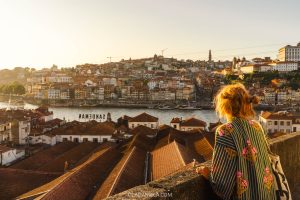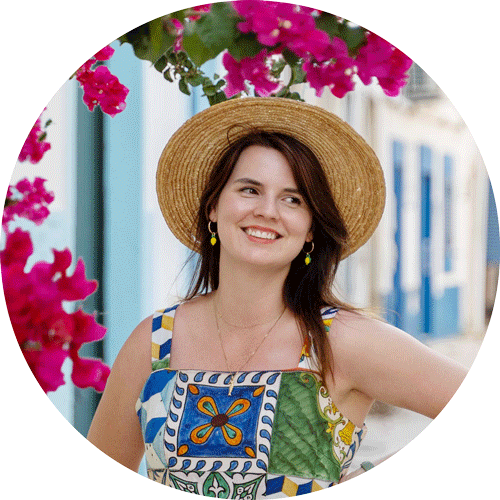If you have 10 days to explore Portugal, this classic itinerary ticks off Lisbon, Porto, and the Algarve.
Sharing a 10-day Portugal itinerary on Olá Daniela is no easy task. Why? Because trip planning is such a personal experience. Whether someone has 7, 10, or 14 days in Portugal, I know from helping others that every itinerary is unique, shaped by individual timelines, interests, and travel styles.
That’s why I’d put off writing a 10-day Portugal itinerary – until now. Many of my readers may have limited vacation time, so I’ve designed this as a fast-paced 10-day trip. But if you’re lucky enough to have more time up your sleeve, I’ve included plenty of details for optional day trips and side quests.
Personally, I enjoy a more moderate travel style and speed, as I value visiting smaller towns and villages. They add such rich colour and contrast to a trip, offering a deeper, more varied experience beyond the main sights. If that sounds more like you (and you still only have 10 days), then I recommend visiting Lisbon and Porto OR Lisbon and the Algarve. Use the extra time to savour slow moments, enjoy curious day trips, and really experience the depth and soul of Portugal.
📅 Want a custom day-by-day plan? Let’s build one together on a 1:1 call — matched to your pace, your budget, and your style of travel.
Contents
ToggleOverview of 10 days in Portugal – Perfect fast-paced itinerary for first-time visitors
- Day 1: Lisbon – Introduction to Lisbon (tour or self-guided); fado music
- Day 2: Lisbon – Day trip to Sintra & Cascais
- Day 3: Lisbon – Visit Belém; time to explore
- Day 4: Lisbon to Algarve – boat to Benagil Cave; Seven Valleys Hike
- Day 5: Algarve – Kayak or boat Ponta da Piedade; beach time
- Day 6: Algarve – Day trip of your choice (West, Central or East Algarve)
- Day 7: Algarve to Porto – drive via Évora or Tomar
- Day 8: Porto – Introduction to Porto (tour or self-guided); tour a Port wine cellar
- Day 9: Porto – Day trip to the Douro Valley
- Day 10: Porto to Lisbon – Drive via Aveiro & Óbidos
Not sure how to fit it all in? Book a 1:1 call with me and I’ll help you figure out the perfect rhythm for your trip.
How many days do you really need in Portugal?
The more, the better (obviously). If you have 5-7 days, you’ll be able to experience a taste of Portugal. I’d suggest limiting yourself to two regions or destinations – e.g. Lisbon and the Algarve, or Lisbon and Porto, but not all three.
If you really want to get to know the country, 10-14 days will give you enough time to dash from north to south – but don’t forget Portugal is more than Lisbon, Porto and the Algarve. The magic happens in the small, spontaneous moments, which you’ll need time for – Portugal rewards slow travel.
When is the best time to visit Portugal?
Spring and autumn – specifically late April to June and September to October. Expect long, sunny days, smaller crowds, and delicious weather ideal for drinking crisp white wine on a terrace.
July and August can be lovely by the coast, but the interior will be super hot. In August, all of Europe is on vacation, which means crowds in popular spots and many restaurant closures in the cities. Winter is quieter and greener, but it’s also when we receive the most rain in Portugal. Pack layers and expect moody skies.
Do I need a rental car?
A rental car will give you to the freedom to do this 10-day itinerary in full, but if you don’t hire a car you can experience the same detinations, just differently. You can easily take the train or a coach bus between Lisbon, Porto and the Algarve, butyou won’t be able to make stops en route (as I have suggested below). If your budget allows, a private driver can make stops between Lisbon and Porto or Porto and the Algarve.
I use Discovercars.com to compare rental prices, conditions and book cars.
Day 1: Lisbon, get to know the capital
Olá, Lisboa! Portugal’s colourful capital is a patchwork of cobblestone streets, brightly-tiled facades, and leafy squares. If you’re coming from an international destination, you’ll likely land in Lisbon (though plenty of flights now arrive in Porto and even Faro, in the Algarve, too). This itinerary assumes you have all day, so if you’ve landed in the morning, find a place to store your luggage – or use Luggit, a storage van that comes to you and later drops your bags at your hotel. Very handy (and use you can use my code OLADANIELA for 10% off).

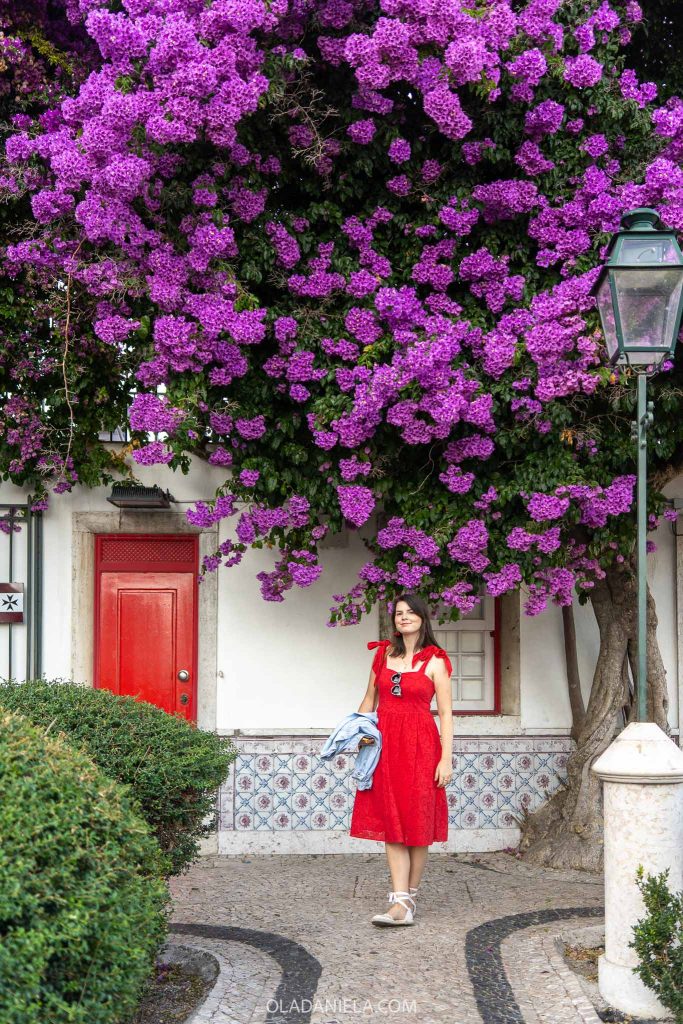
First time in Portugal? Read this article next to learn about the top mistakes to avoid.
Morning – introduction to Lisbon, self-guided or a tour
Since it’s your first day in Portugal, consider a guided tour so you can meet the locals, learn about the country’s history and gain cultural tips. If a guided tour is out of budget, Lisbon is easy enough to navigate solo too.
If you want to go guided, you can:
- Join a small-group walking tour and explore the city heart, learning about history and important sights
- Book a private tuk-tuk tour and cover more ground. Lisbon is very hilly and quite spread out, so I strongly suggest this as your top option in order to see the most. I can highly recommend Joao’s Journeys. The 3.5h “Seven Hills” tour will show you the best of the whole city. He also offers shorter tours if you prefer
- Join a small-group food tour, and eat your way across the historic centre, learning about food with a side serve of history
If you don’t want to go guided, follow Day 1 of my 48 hours in Lisbon guide. It sends you into the more historic neighbourhoods of the city, including Alfama, where you’ll find plenty of sights to explore and things to do.
Lunch: Half of my site, Ola Daniela, is about what and where to eat in Portugal, so I have some great recommendations. Here’s my Lisbon restaurant guide, or since it’s lunchtime, why not go for a local tasca to try authentic local dishes – here are some of my favourite tascas.
Afternoon: Continue exploring old Lisbon
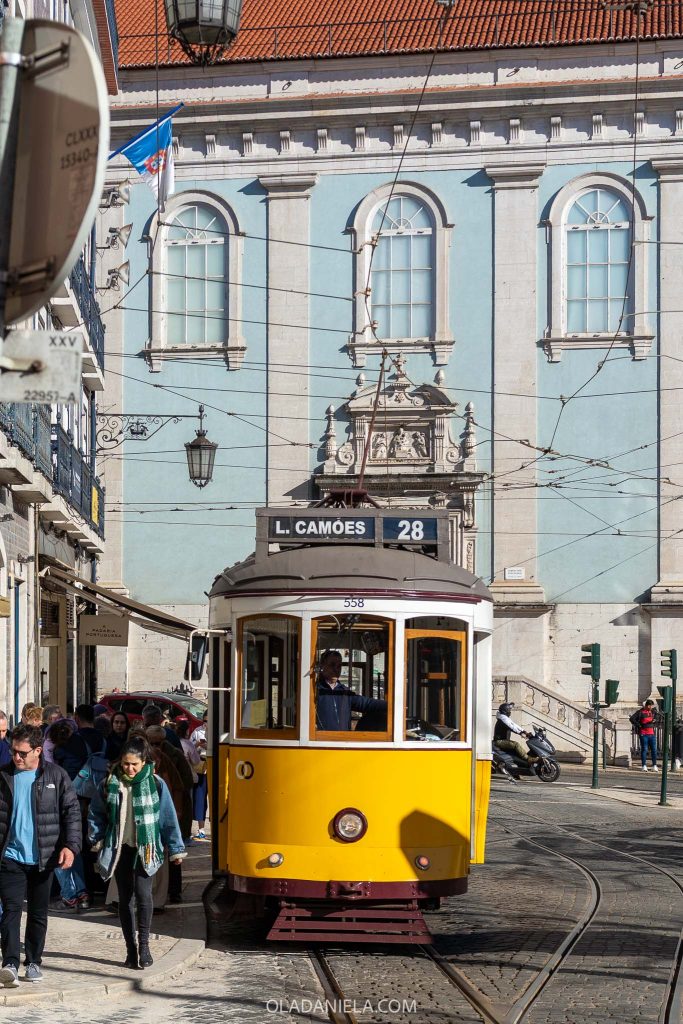
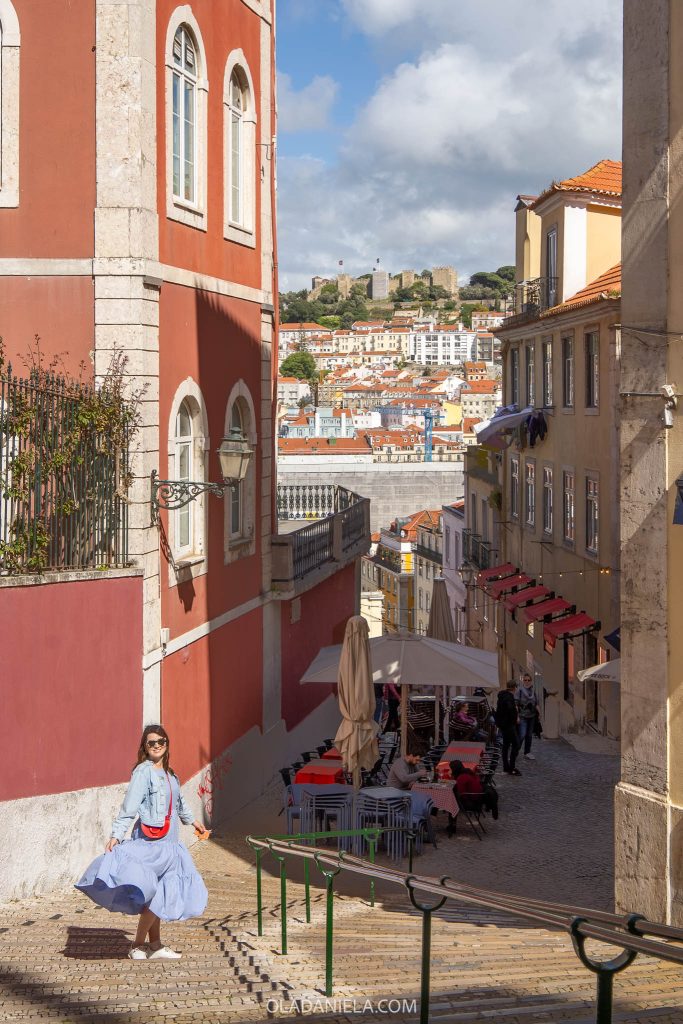
In the afternoon, take your time exploring Lisbon’s historic heart at your own pace. Let yourself get lost in Alfama’s tangle of cobbled lanes, or venture to Baixa and Chiado. Here are some ideas.
Things to do & see in Alfama
- Sé: the oldest church in the city
- Museu do Fado: museum dedicated to Fado, a genre of music
- Tile-painting workshop: make your own souvenir
- Small-group Alfama walking tour: covering the stories of Alfama
- Half-day e-bike tour: explore the city by electric bike
- Igreja de São Vicente de Fora: for a church with tiles, head here
- Museu do Aljube Resistência e Liberdade: museum about the past 100 years, covering the rise and fall of the dictatorship that lasted until 1974
Things to do & see in Baixa & Chiado
- Santa Justa Lift: Lisbon has lots of hills! They built this neo-Gothic elevator in 1899. Snap a photo and skip the queue – you can walk to the top easily enough
- Convento do Carmo: built in 1389, the cathedral was left in ruins after the 1755 earthquake
- Rossio Station: Central Station, but if Central Station were in romantic Manueliene architecture
- Rua Augusta & Praça do Comércio: Baixa’s main pedestrian shopping street leads to Lisbon’s grandest square. Once you reach the waterfront, wander along and enjoy the vibe or stop for a drink
- Shop for souvenirs in Chiado, where you’ll find local brands like A Vida Portuguesa, Ceramica na Linha, Burel, Zillian, The Feeting Room, and more
Evening: Listen to Fado music
Fado is a traditional style of music from Portugal, sometimes called the Portuguese blues, thanks to its themes of longing, love, and nostalgia. Usually, fado is sung as a trio, with a singer, a 12-string Portuguese guitar and a six-string guitar. Even when I can’t understand the lyrics, the powerful voices and tunes always give me goosebumps. It’s emotive, it’s raw, it’s full of passion, and it’s a must-do.
The music genre originated in the old neighbourhoods of Lisbon, and in the capital, you’ll find lots of fado clubs where you pay a set price for a three-course meal with music. I’ve also included a few alternative options below: a 1-hour pre-dinner concert with wine; a fado tour with a guide; and a restaurant that offers à la carte.
Fado’s #1 rule: You must be silent when the performers are playing.
- Gain more context on the art of fado with this guided musical tour. Your local guide will lead you on a walking tour through Mouraria and Alfama, sharing stories about the history of fado before you sit down for dinner and a show
- For dinner and a show, I recently went to this fado house and thought it was good value for the experience. For €50, you receive what must have been a dozen small dishes, so you’ll taste lots of traditional Portuguese snacks while enjoying the great music
- Another favourite dinner and show spot is Mesa de Frades. The setting is truly beautiful, a small and intimate club in an old tile-lined chapel. The experience is €65 for a three-course meal with music, but it’s known for having some of the best singers
- For a quick pre-dinner show, Lisboa em Fado is highly rated and offers an intimate one-hour experience and a glass of port wine
- And finally, I love A Baiuca for a more relaxed à la carte experience. The restaurant is tiny and you’ll be squeezed in, perched on small stools, but the experience is fun. Reserve directly via Facebook message
Where to eat in Lisbon: Looking for tips on where to eat in the capital? Read my Local’s Lisbon Restaurant Guide (2025): 41 Best Places To Eat
Where to stay in Lisbon
It’s a big city with plenty of choice, read my guide on where to stay in Lisbon and find your perfect base.
Day 2: Day trip to Sintra & Cascais

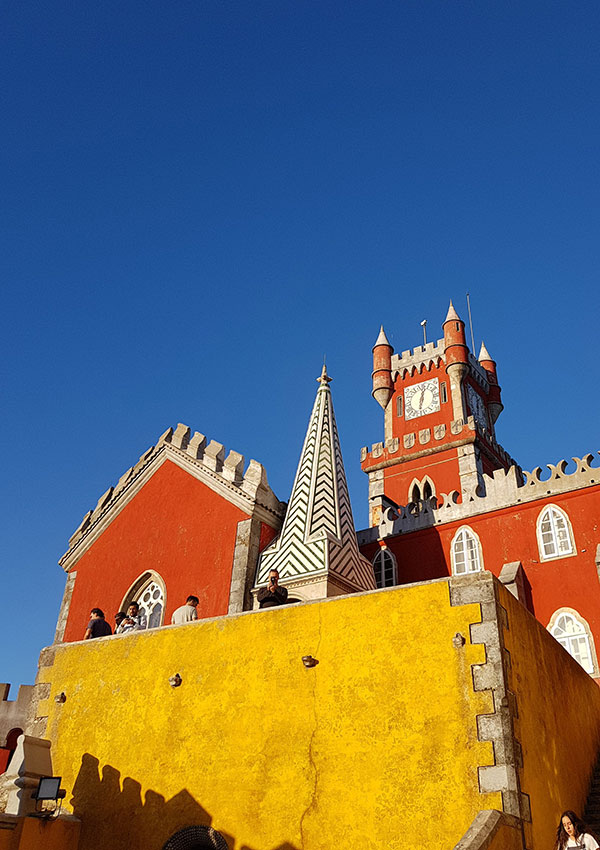
The romance of a bygone era is still alive in Sintra, a 19th-century summer playground for the royals and the rich. Dotted across a lush green mountain reserve, just a 25-minute drive from Lisbon, you’ll come upon more than half a dozen extravagant and unique palaces, and a 10th-century Moorish castle.
Sintra is easily Lisbon’s best and most popular day trip, and for good reason. Most people want to see the Disney-like, yellow-and-red Pena Palace, and the mysterious gardens and tunnels of Quinta da Regaleira – but there are other beautiful, quieter landmarks to explore.
If you have limited time in Lisbon, my favourite way to explore is to combine Sintra with Cascais, a chic seaside town, exploring the rocky coastline and mountainside en route. You can easily get the train to Sintra and do self-guided, but if you choose a guide for the day (or join my favourite off-road Jeep tour), you’ll really explore the area.
With a guide, you’ll:
- Explore a palace or two, with history and details
- Drive through the lush Sintra-Cascais Natural Park to the coastline
- Stand at the westernmost point of continental Europe, Cabo da Roca
- Follow winding coastal roads past Guincho Beach
- Stop or finish in the seaside town of Cascais, where you can stay for dinner or drinks before returning to Lisbon
Sintra guides I recommend:
- For something adventurous and different, I personally recommend Flamingo, who run off-road tours of Sintra in vintage Portuguese UMM Jeeps. You see a palace, then hit off-road mountain trails, go to lookouts, etc. It’s super fun!
- For a guide with a car, Fernando from “Portuguese Chauffeur – Private Tours” is fantastic. He includes pick-up and drop-off in Lisbon and will shape the day to suit your group. His rates are really reasonable for private tours too
Read next: Lisbon’s best day trip: Sintra 1 Itinerary
Tip: Carry a jacket at all times (seriously, it’s much colder here than in Lisbon).
Alternative day trip: Setúbal & Arrábida Natural Park
Day 3: Lisbon, go deeper and visit Belém
Morning: Flea market, neighbourhood hopping and views
If it’s a Tuesday or Saturday morning, Lisbon’s Feira da Ladra flea market will be buzzing next to the Pantheon in Alfama. It’s a gorgeous, historic area of Lisbon, and you never know what treasures you’ll find. At the centre of the market is a leafy park with a kiosk that makes for a lovely escape, or there are stacks of cafes and restaurants with tables that spill out onto terraces overlooking the flea market.
If not, I’d set out to explore some of Lisbon’s inner-city neighbourhoods, visit a museum, or chase your personal interests – I’ll share some quick ideas below.

If you explored downtown Baixa and Chiado yesterday, head into Príncipe Real. The main street of this chic, pastel-hued neighbourhood tops a ridge where canary-yellow trams trundle along and cool restaurants or boutiques line each side. Stop for views at Miradouro de São Pedro de Alcântara on the way in.
Alternative ideas for things to do in Lisbon
Lisbon is fairly limitless in terms of things to do, with something for everyone.
- Join a cooking class and learn about Portuguese cuisine
- Head to the top of Parque Eduardo for great panoramic views
- Take the family to the Oceanarium and meet the otters
- Visit the beautiful Jardim Gulbenkian and explore the two Gulbenkian galleries
- Wander through leafy Jardim de Estrela and climb onto the roof of the nearby Basilica
- Shop Portuguese brands in Chiado or Príncipe Real, or shop luxury labels on Avenida Liberdade
- Take the train to the beaches of the Cascais line, or Uber over to the Costa da Caparica beach clubs
Afternoon: Pilgrimage to the Belém neighbourhood, for history and tarts


Belém is a must-visit Lisbon neighbourhood deeply connected to Portugal’s maritime history. Between the many monuments, museums, and manicured parklands, you’ll discover tales of explorers, like Vasco da Gama in 1497, who left to map the world during Portugal’s powerful Age of Discoveries.
Besides history and seeing some of Portugal’s most important buildings, any visitor should make a pilgrimage to Belém to eat the original pastel de nata at a bakery open since 1837. Here’s what to do – more details in my Belém guide.
- See the Jeronimos Monastery (entering the church is free, or you can buy tickets to enter the cloisters)
- Try Pastéis de Belem (the original custard tarts) – I like to join the table queue (middle door), which moves very fast as they have 400+ seats inside
- See the Discoveries Monument, which symbolises the discovery of the ‘new world’
- Next to the monument is a great oyster truck – Ostras Sobre Rodas – with local oysters and wine!
- Walk over to the Belém Tower, a 16th-century tower in the river and a symbol of the city
- From there, I’d walk along the riverfront, past parkland and museums, back towards the bridge. After the bridge, the waterfront gets a bit ugly – jump on a tram, bus, or Uber
- Close to the bridge pillar is the LX Factory, a creative micro-neighbourhood that has taken over an old textile factory. Inside, you’ll find restaurants, afternoon happy hour specials, shops, artisans, and cool street art
Further reading: Best things to do in Belém and Local’s guide to the LX Factory, Lisbon’s creative micro neighbourhood
Evening: Go sailing at sunset
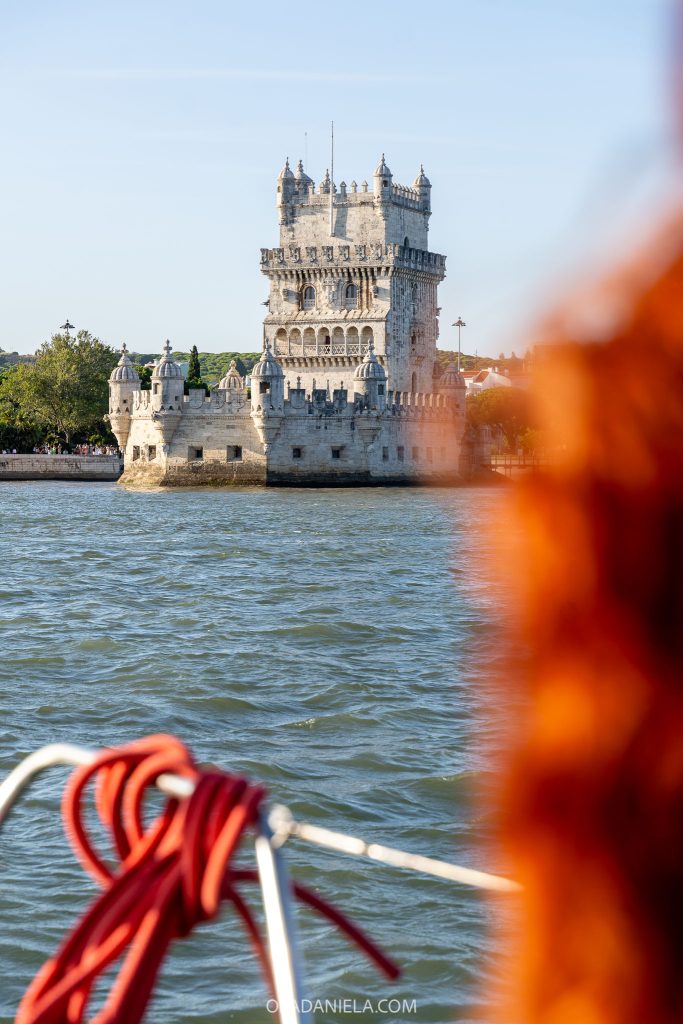

Belém and Alcântara have a couple of smaller docks where you can go sailing in a sailboat (my favourite) or board a fun party boat and watch the sunset. Either way, you’ll be out on the water for a couple of hours with a glass of wine, looking at the historic city from a new perspective. My pick is the classic sailboat tour (or private charter) with Enjoy Tagus. Find more boat tours with my guide.
📅 Want a day-by-day plan? I’ll build one with you on a 1:1 travel call – matched to your pace, your budget, and your style of travel.
Day 4: Drive from Lisbon to Algarve, boat to Benagil Cave
One thing I find first-time visitors to Portugal underestimate is that the Algarve is a huge region, not a singular place. There are 150 kilometres (100 miles) of coastline to explore, many towns and villages, and so much to do.
Planning tip: If you have less than three available days for the Algarve, cross it off your itinerary and explore beaches closer to Lisbon or between the capital and Porto.
Morning: Travel to the Algarve
There are four ways to reach the Algarve: rental car, private driver, train, or coach bus.
I would only pick up your rental car on Day 4, because having a car in Lisbon is honestly just a pain. Choose to zip down the highway, reaching the Algarve Coast in about 2.5 hours, or take the slower coastal route and make a day of it – I’ve detailed some potential stops between Lisbon and the Algarve here.
Afternoon: Benagil Cave, Praia da Marinha & Seven Valleys Hike
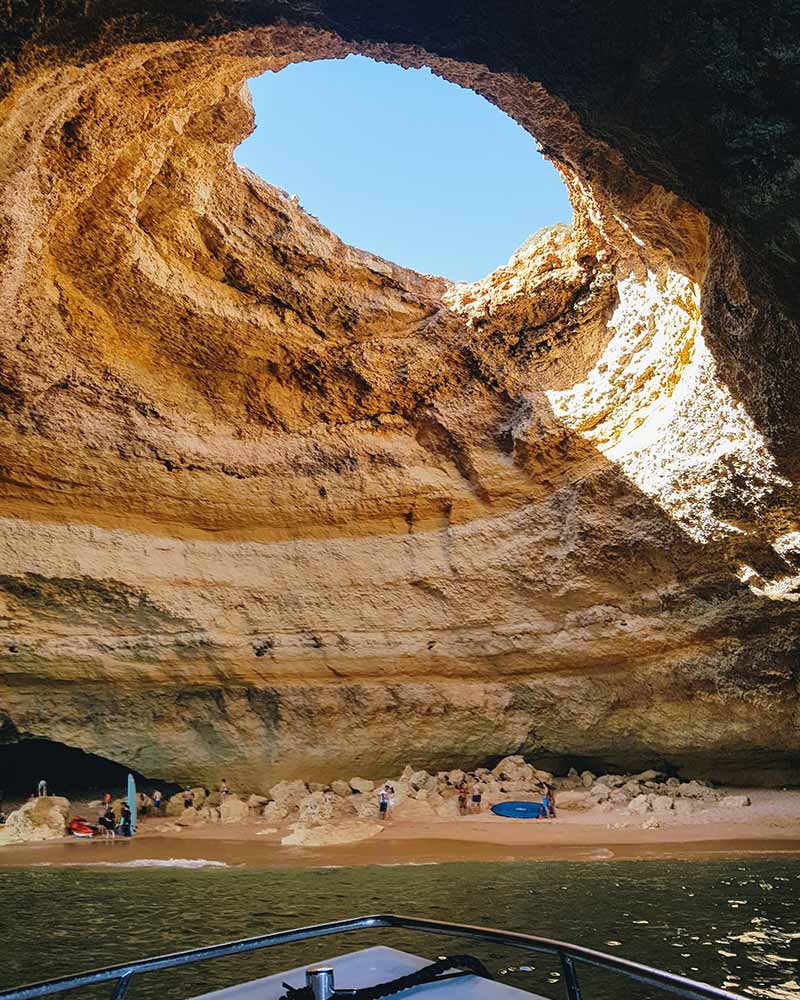
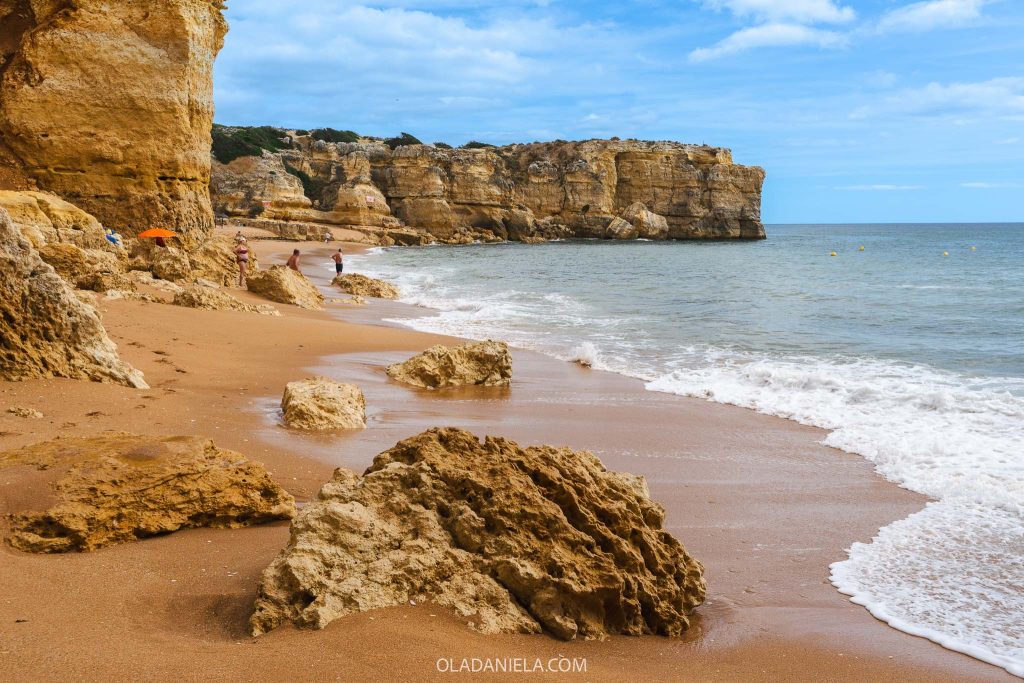
Dive straight into Algarve sightseeing and head for the coast’s famous cliffs. The most popular thing to do in the Algarve is to visit Benagil Cave – now, you know that means there will be crowds, but there are also rules. While you used to be able to stand on the beach within the sea cave, recent regulations mean you have to join a guided kayak tour or boat excursion to see the cave. Due to traffic, there is a time limit, and kayaks get longer to appreciate Benagil’s beauty.
I’d book your Benagil kayak or boat excursion ahead if you’re crazy keen, otherwise you could hike the famous Seven Valleys Trail, which stretches along the coastal cliffs between Praia do Vale de Centeanes and Praia de Marinha. With parking lots at both ends, you can trek the 6-kilometre (3.7-mile) trail one way, then Uber or Bolt back to your car. Pack plenty of water and your swimsuit, as you can take dips along the way. You’ll actually pass by Benagil en route, so you could chance it for a kayak or boat tour (good luck).
Where to stay in the Algarve
In the Algarve, there’s so much choice. You can choose a town base, such as Lagos or Faro, or you can choose a resort base somewhere along the coast. If you’re looking for a town or village, I’ve written a detailed guide about each Algarve destination. For first-time visitors, Lagos or Carvoeiro make a good base with lots of restaurants and a touch of nightlife.
Day 5: Algarve: Explore Ponta da Piedade, beach time
Morning: Kayak around Ponta da Piedade in Lagos
While the entire Algarve coastline offers access to incredible beaches, the central and western Algarve are most famous for dramatic orange cliffs and one-of-a-kind spots. My favourite beach near Lagos is the dramatic Praia do Camilo, but you have to explore the whole peninsula of Ponta da Piedade.


This real-life postcard is a series of orange cliffs carved by the sea and time. You can wander along the boardwalks on top, but the best way to experience the landscape is with a kayak tour or boat excursion that can dip into sea caves and explore the cliffs to their full potential. For the best light, go in the morning. On my last Algarve trip, I did this guided kayak experience. We jetted towards the cliffs before launching our kayaks, spending about one hour paddling around the craggy rock formations after our humorous guide.
Tip: Before kayaking, grab coffee and breakfast at my favourite café, Everyday People. It’s close to the marina.
Afternoon: Beach time, or explore Lagos

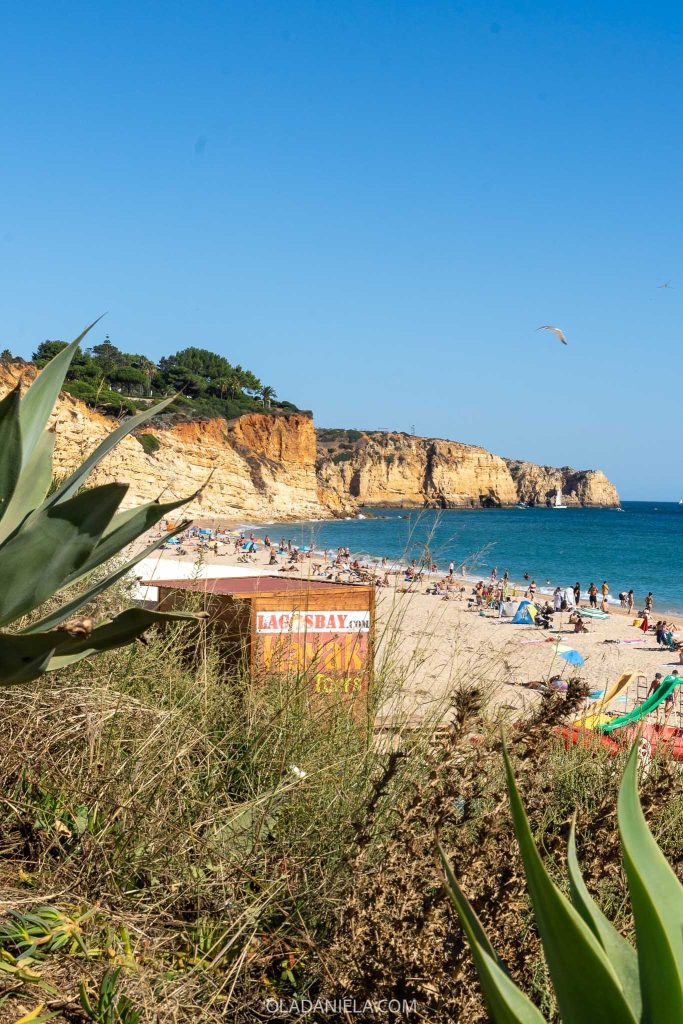
Since you’re in Lagos, you could spend the afternoon lazing on a beautiful beach, explore the historic centre, or pop to the villages of Burgau or Ferragudo nearby.
Things to do in Lagos
- Explore picturesque cliffs, hidden coves, and sea caves with a boat tour from Lagos
- Embark on a guided kayak or stand-up paddleboard adventure
- Visit the Slave Market Museum, which sheds light on Lagos’ role in the transatlantic slave trade
- Shop at the local mercado to buy fresh fruit and local produce
- Chase thrills with adventure water sports, like windsurfing, kiteboarding, or jetboating
- Go dolphin watching with a boat safari
- Discover local history and culture at the Lagos Regional Museum
- Tee off at a nearby golf course, such as Palmares Golf or Boavista Golf & Spa Resort
Day 6: Algarve: day trip of your choice
On Day 6 of this Portugal itinerary, you can choose your own adventure. Either opt for a lazy lay-by-the-pool or beach-hopping day, or pick one of the suggested day trips below to explore the coast.
Day trip west Algarve: Sagres & the West Coast
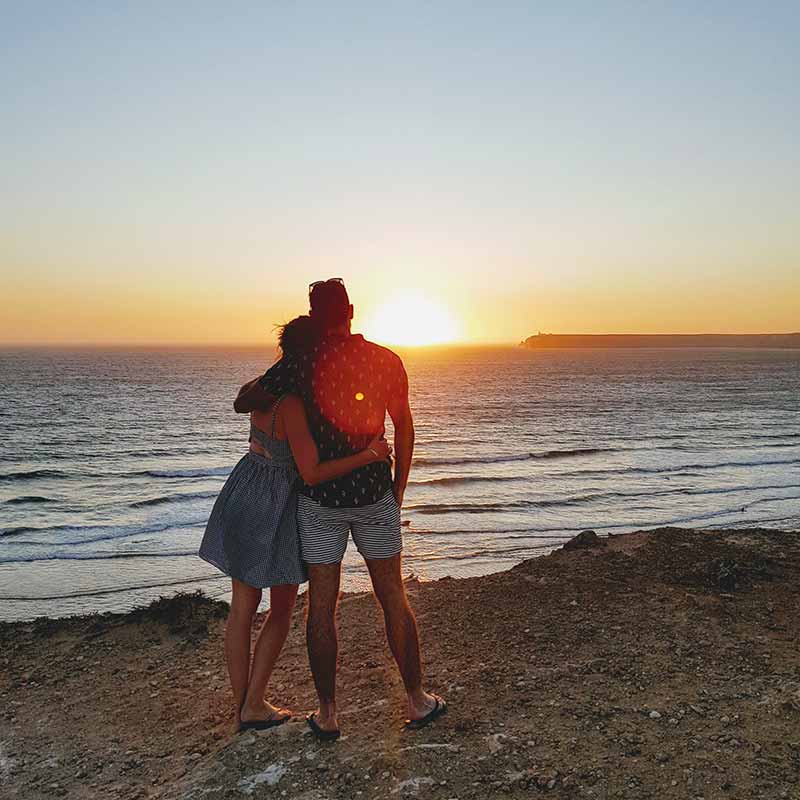
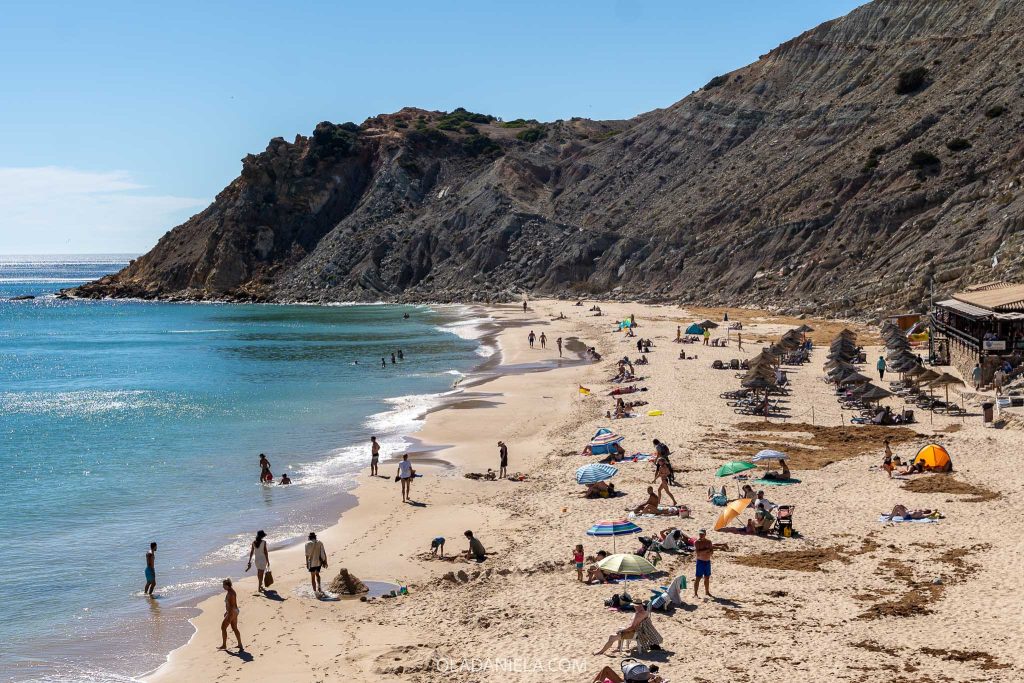

Sagres is the southwest tip of Portugal, and the peninsula juts out dramatically with high cliffs and cool breezes. Pack jackets and make the drive here if you’re interested in surf culture, Portugal’s Age of Discoveries, or a quieter corner. Sagres is 35 minutes west of Lagos.
- En route, visit a cute town called Burgau, partway between Sagres and Lagos, and explore some quieter beaches
- In Sagres, find a fort, lighthouses (Farol do Cabo de São Vicente and Farol de Sagres), and museums. This is one of the places where Portugal launched ships during the Age of Discoveries – hence why it was once known as the “edge of the earth”. And it’s so windy there at times, it can feel that way!
- It’s a lovely spot for sunset at the top of the high cliffs. Here, the sun sets into the ocean
- Don’t miss Ceramic Paraiso! You’ll see this huge warehouse filled with Portuguese ceramics on the drive in. Great value!
- Retiro do Pescador is a good local restaurant hidden in the backstreets of Sagres. Arte Bianca does good Italian pizza
- If you have time, head north along the west coast to Arrifana, a surf haven, where you can rent boards or take a lesson
Day trip central Algarve: Silves & Ferragudo

This day trip combines the former Moorish capital of the Algarve (and its castle) with a cute fishing village and dreamy wine tasting.
- Silves is the Moorish capital of the Algarve. It’s an inland town on a river with a huge red castle above the town. Drop into Café DaRosa for coffee and cake. If you want lunch, try Marisqueira Rui, a famous seafood restaurant
- Close to here is Morgado do Quintão, a really lovely winery where you can join a tasting under a 2,000-year-old olive tree. Booking is essential
- In the afternoon, aim for the beach. Praia dos Três Irmãos or Praia Grande in Ferragudo are charming
- Later, visit the Old Village of Ferragudo. It’s a postcard-cute fishing village with lots of seafood restaurants and fish grills by the water, where tiny fishing boats bob in the harbour nearby. Very pretty. Walk through the town, passing bougainvillea-covered streets, to the beach where a castle looms over the sand
Day trip east Algarve: Olhão, Tavira & Cacela Velha
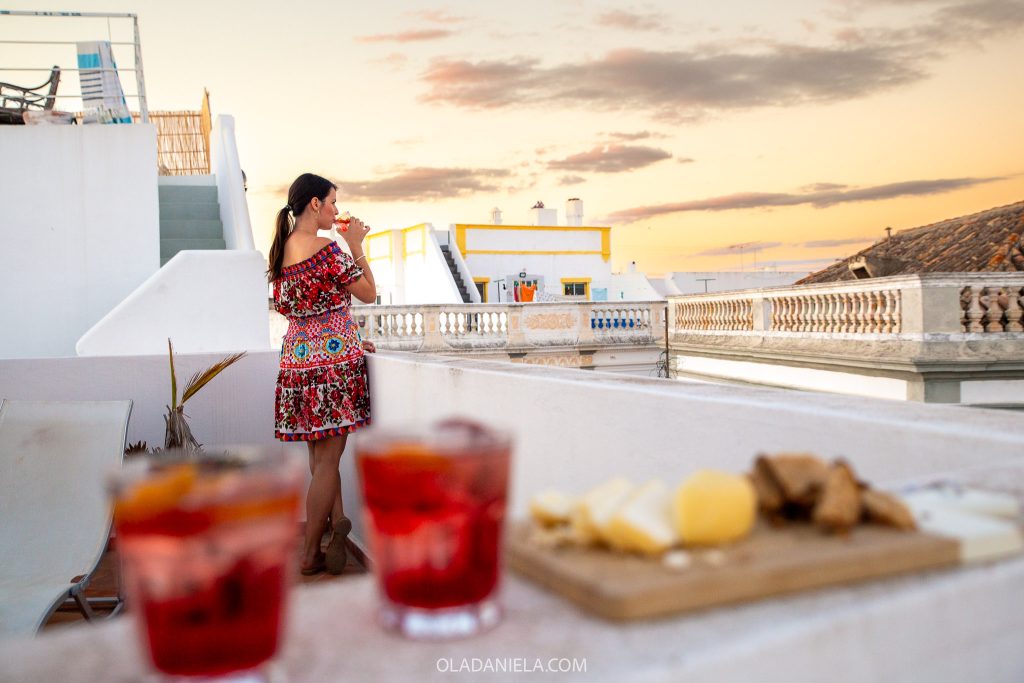

I love the east of the Algarve, where the towns of the Ria Formosa wetlands are more historic and the beaches are quieter with whiter sand. There’s a bit much to do on this day trip, so I’d choose Olhão or Tavira, and a sand bank beach or Cacela Velha.
- Start in Olhão at the market, one of the best fish and fresh produce markets in all of Portugal. Have breakfast or coffee here, and then either pick up picnic supplies for a light lunch at the beach (fruit, cheese, charcuterie meats, wine) or have lunch at Chá Chá Chá or Vai e Volta. Read more: 13 best things to do in Olhão
- Or visit Tavira, commonly said to be the most beautiful town in the Algarve. Wander over the Roman Bridge, tour the castle gardens, see the Roman ruins, and walk through cute squares before taking a ferry out to Ilha de Tavira, a sandbar island, for some beach time
- Or, in the afternoon, head to Cacela Velha, a tiny village with an amazing seafood restaurant that opens at 4.30pm. Arrive early to wade across the sand bank to the beach (or take a cheap, short ferry ride). Then return for an afternoon feast of oysters, fantastic prawns, clams, prosciutto, flaming chorizo, and half loaves of bread with crisp white wine at Casa da Igreja
Read next: My favourite towns in the Eastern Algarve
✨ Overwhelmed by options? Let’s sort your itinerary together. I’ll help you shape the perfect trip – check out my 1:1 video call service.
Day 7: Algarve to Porto, via Évora or Tomar
The drive from the Algarve to Porto takes at least five hours, so you’ll want to split up the journey. If you take the train, you’ll have to switch lines in Lisbon, and the journey will take the majority of the day (with no fun), or you can fly (but you’ll miss seeing the countryside).
My suggestion is to make a road trip of your drive from the Algarve to Porto with your rental car, or hire a private driver who will make a couple of stops along the way (I can recommend one if you DM me, I know it’s a bit tricky to find).
Option 1: Drive to Porto via Évora, the Alentejo capital

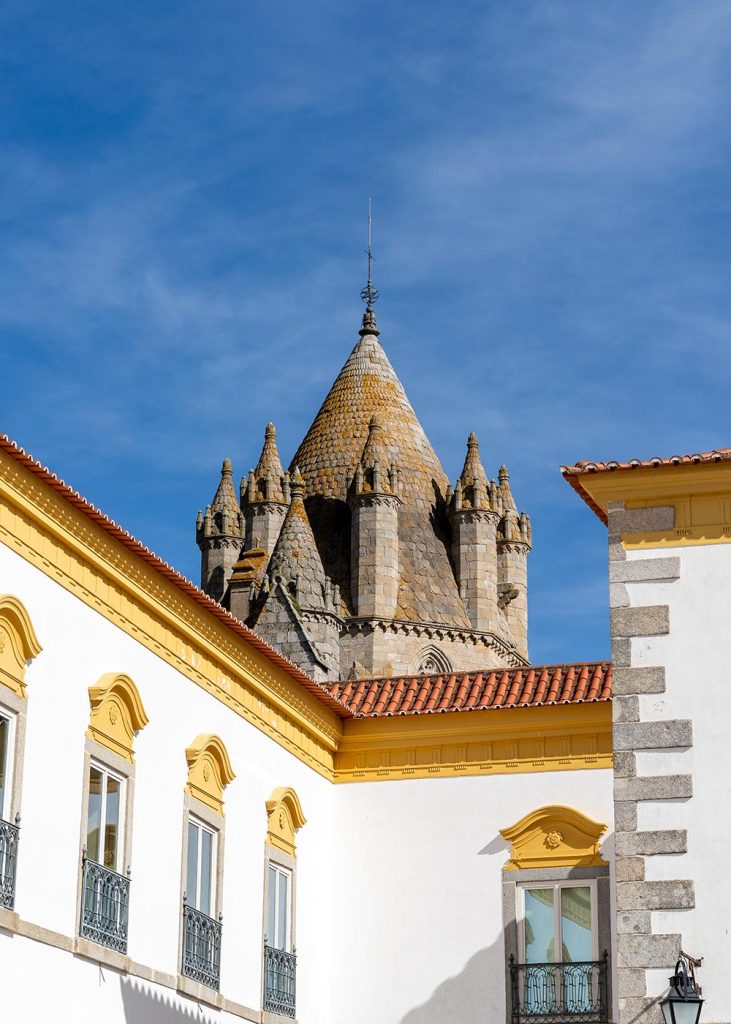
It’ll take between 2-2.5 hours to reach Évora, a small inland city that’s encircled by city walls.
- Head straight to Pastelaria Conventual Pão de Rala, my favourite little bakery, for coffee and to try the city’s traditional sweets
- Then wander up Évora’s highest hill to see the Roman Temple, a Moorish tower, and the ginormous Catholic cathedral. The three represent the cultures that have shaped this city over two thousand years
There’s so much to do in Évora, so if you want to stay overnight or see your options, then check out my guide to the best things to do in Évora. As for lunch, take your pick from these restaurants in my where to eat in Évora guide.
From Évora, it’s still a 3.5-hour drive to Porto. You could break up this portion of the drive with a brief stop in Coimbra or Aveiro, though both are large cities with lots to see, so for something more minor, visit the Grutas de Mira de Aire (caves), or the religious site of Fátima and nearby Ourém Castle.
Option 2: Drive to Porto via Tomar, the Knights Templar stronghold

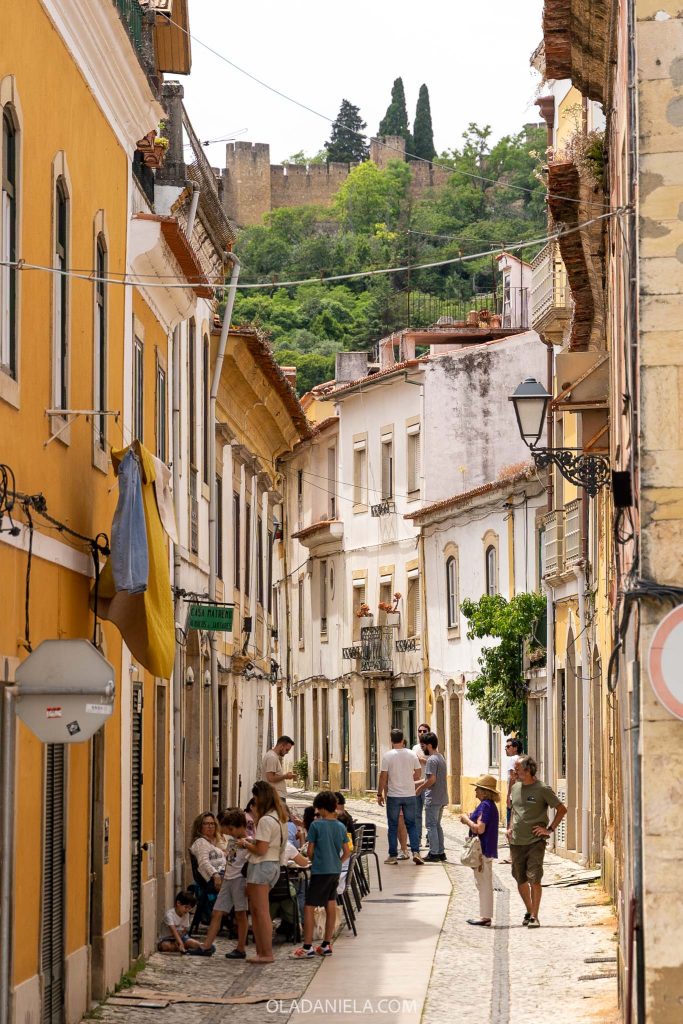
I’d love to say you have time to see both Évora and Tomar on the route north, but both small cities hold so much history and curious sights that I’d suggest you don’t overdo it. Tomar is about 3.5 hours north of the Algarve, and if you set off early enough, you could make a small detour to see Almourol Castle, set on an island in the middle of the Tagus River.
- In Tomar, the main site to see is the Convent of Christ, an incredible slice of history linked to a mysterious medieval military and religious order known as the Knights Templar, and later the Order of Christ. The UNESCO World Heritage site is worth at least two hours of your time to see the many cloisters, the round Chorala temple, and the late-Gothic Manueline window. Buy tickets here
- After, pop by the Tomar aqueduct – you can walk along the top if you’re brave enough – then continue north.
- If it’s a hot summer day, make a stop at the Fragas de São Simão river beach or just charge on two hours north to Porto.
Day 8: Porto, the unstoppable second city
Porto is hard not to love. The compact downtown is packed with history, skinny cobbled streets, and cool spots to stop for a classic tawny Port or funky natural wine. On this 10-day Portugal itinerary, I’m giving you just one day to explore Porto – it’s enough time to see all the top sights, but I’ve been a dozen or more times and discover something new each visit.
Morning – introduction to Porto, self-guided or a tour
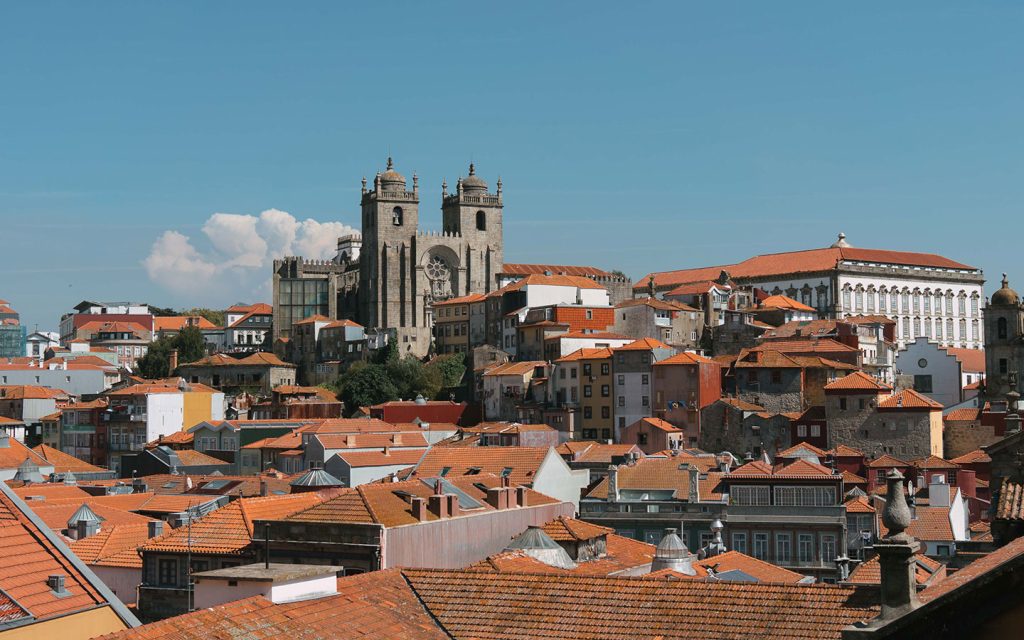
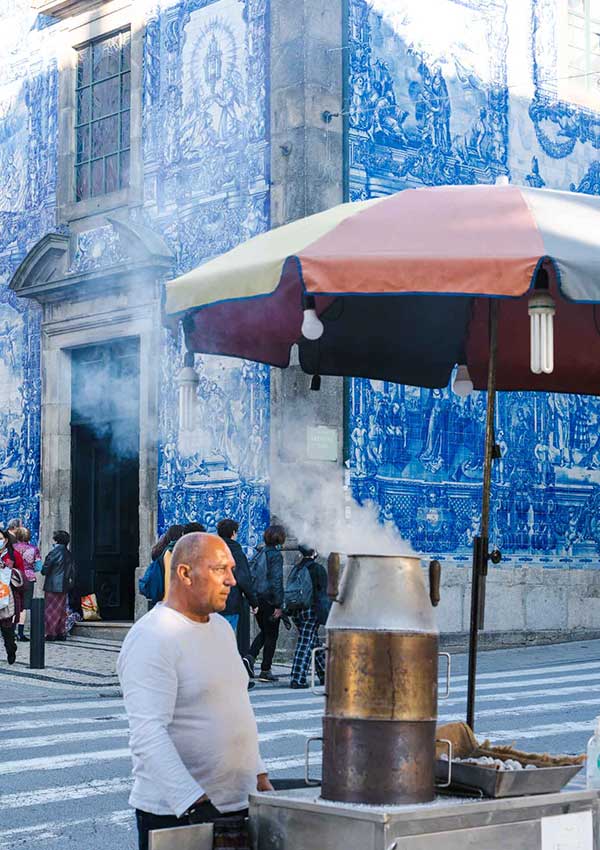
Kick off Day 8 by exploring Porto’s central historic neighbourhoods and sights.
If you want to go guided, you can:
- Walking tour: Porto is a very walkable city with many sights. You can explore solo or with a guide. This private walking tour packs lots of history into 3 hours, along with seeing all the sights
- Tile walking tour: For a tile deep-dive, this one is focused on Porto tiles
- Food tour: This 3-hr food tour can run in the morning or afternoon
If you prefer to explore independently, follow Day 1 of my 48-hour guide to Porto. In essence, I suggest starting at the Bolhão Market – you can find pastry shops within or nearby for breakfast (or better yet, join a guided food tour in the market). After, seek out some of Porto’s famous tiled churches. In between, you’ll come across cool boutiques, artisan makers and more as you wander downhill towards Ribeira and the riverfront.
Things to do in Porto
- Climb the Clerigos Tower in the middle of the city for views across Porto
- Pass through the magical Bank of Materials, a tiny free museum where they store antique and vintage tiles, ceramics and building pieces for use in construction
- Pre-purchase tickets for Livraria Lello, the famous bookshop that looks like it inspired Harry Potter, even if it didn’t. Alternatively, you can spend half the day lining up
- Prance about the Palacio do Bolsa, the old commerce house. It’s a spectacular palace-like building
- If you didn’t arrive by train, visit the entrance hall of the city’s central station, Estação de Porto São Bento, to see 20,000 insanely beautiful, hand-painted tiles. You could create a self-guided trail between Porto’s most beautiful tiled buildings
- Visit a gallery, such as the Soares dos Reis National Museum or Portuguese Centre of Photography, or venture out to the Serralves gallery and parkland
- This 4-hour market cooking experience starts at Bolhão Market, then the group goes to the kitchen. Cook a traditional Portuguese meal – guests can choose to watch or help out. Looks like they usually make pasteis de nata for dessert, so this experience ticks a few boxes
Lunch: Where to eat in Porto
Afternoon: Tour a Port wine cellar or boat on the river
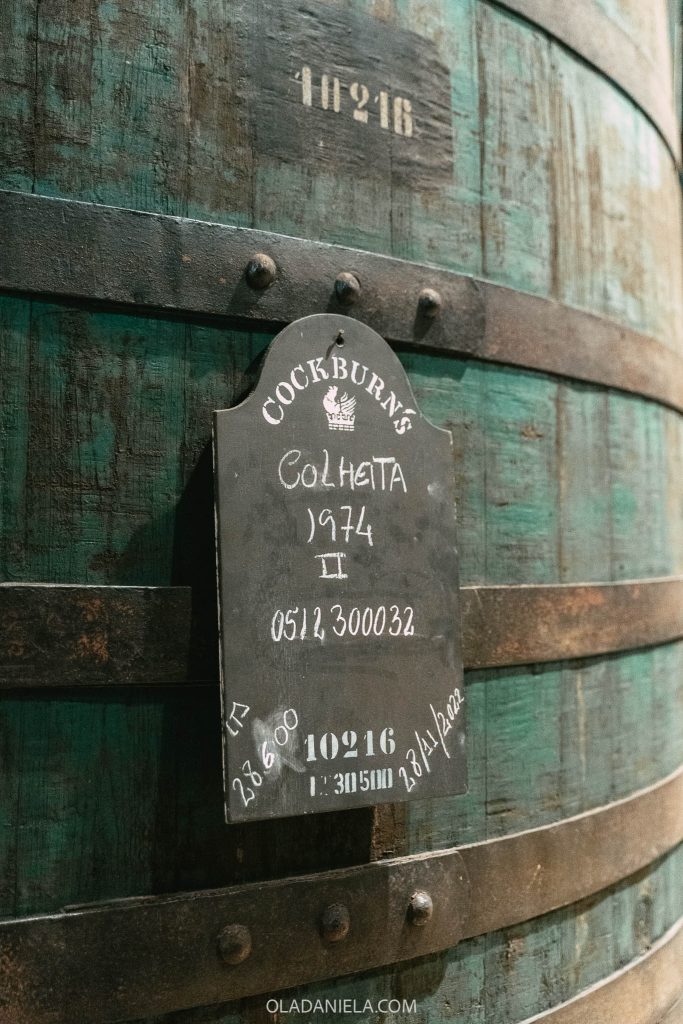
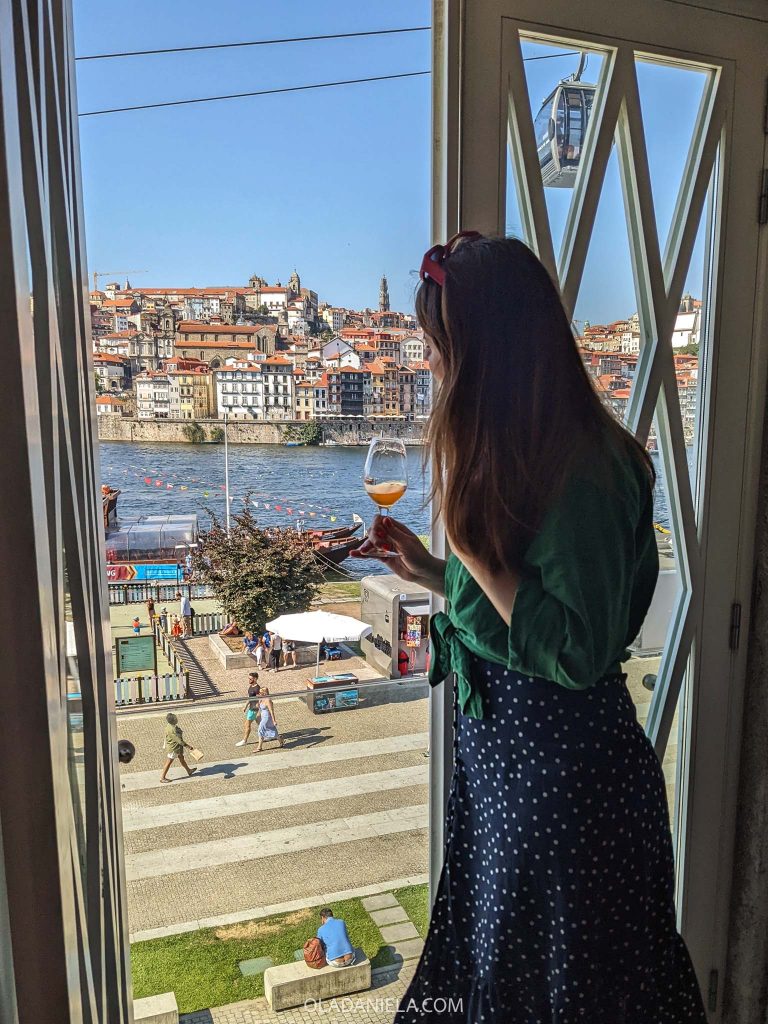
When in Porto, you absolutely must do a port wine tasting tour. While the grapes are grown upstream in the Douro Valley, all port wine is aged in the more humid conditions in Vila Nova de Gaia, on the southern bank of the Douro River opposite Porto’s downtown.
Cross the narrow river to find two dozen port wine cellars, most of which offer tastings and tours. While you can try a walk-in, I’d recommend booking ahead to get your language and time preference. The last tours usually kick off around 5pm.
Some favourite port wine tours of mine are….
- Taylor’s – €25 – this basic tasting at Taylor’s is a decent introduction to port wine
- Cockburn’s – €30 – this tasting includes three tawny ports, which is a great way to understand how aging impacts the wine. Plus, it has the only working cooperage in Gaia
- Graham’s – €40 – Graham’s has one of the best views of Porto from the tasting room. This experience pairs the ports with cheese, chocolate, and a pastel de nata
- Quevedo – this is a port experience without a cellar tour or visit
Read more…. Best Porto wine tasting tours (that I’ve done) & a list of port wine cellars
Another great afternoon or evening activity in Porto is a boat tour. It’s fantastic to see the city from the water, and you can choose between a cheap, touristic boat tour or opt for a longer, more intimate sailing experience.
- Porto Six Bridges is the most popular one-hour tourist boat. It’s an affordable way to get out on the water and see Porto from the river, but it’s very touristic. You cruise around for about 50 minutes, and it’s just €18 per person. I’ve done it, and it does the job – a quick, affordable way to get on the river
- For something more intimate, this two-hour river cruise or this boat set off on a smaller sailboat for around €45 per person.
Evening: Catch a legendary Porto sunset

Jardim do Morro is “the place” to watch the sunset in Porto. Yes, it’s very busy – but it’s a serious vibe! From this public garden, high on the hill, you’ll soak in a fantastic panoramic view of Porto’s historic skyline. There is almost always a busking band giving the grassy hill atmosphere, and roving vendors wander by selling drinks and snacks too. Busy, but beautiful.
In winter, when the sun sets much earlier, I love to catch the sunset from the top of the Sé cathedral. Time it right with the opening hours, and you can climb the tower to see Porto cast in golden light. Dreamy.
Cool bars to explore in Porto
But don’t stay out too late – there’s a huge day trip planned tomorrow….
- Genuino – really cool natural wine and vermouth bar with Brazilian-inspired snacks
- Rooftop Flores – secret garden bar with great city views
- Fiasco – cool cocktail bar with vinyl
- Flôr Bar – known for experimental cocktails
- Aduela – casual bar that attracts a crowd to the terrace
- Musa das Virtudes – craft brewery with a lovely terrace, creative snacks, and views
- Royal Cocktail Club – old-school, speakeasy-vibe cocktail bar
Day 9: Day trip to the Douro Valley
Today, the Douro Valley is calling. If you love good wine, insane views and being in the countryside, then use Day 9 for a Douro Valley winery tour.
It’s one of the most rewarding day trips from Porto, but it’s a long day with an early start. The Douro Valley is celebrated as the world’s oldest officially designated wine region, and the dramatic terraced vineyards, historic quintas, and centuries-old winemaking heritage are just a few reasons to explore the UNESCO World Heritage site that spans 26,000 hectares.

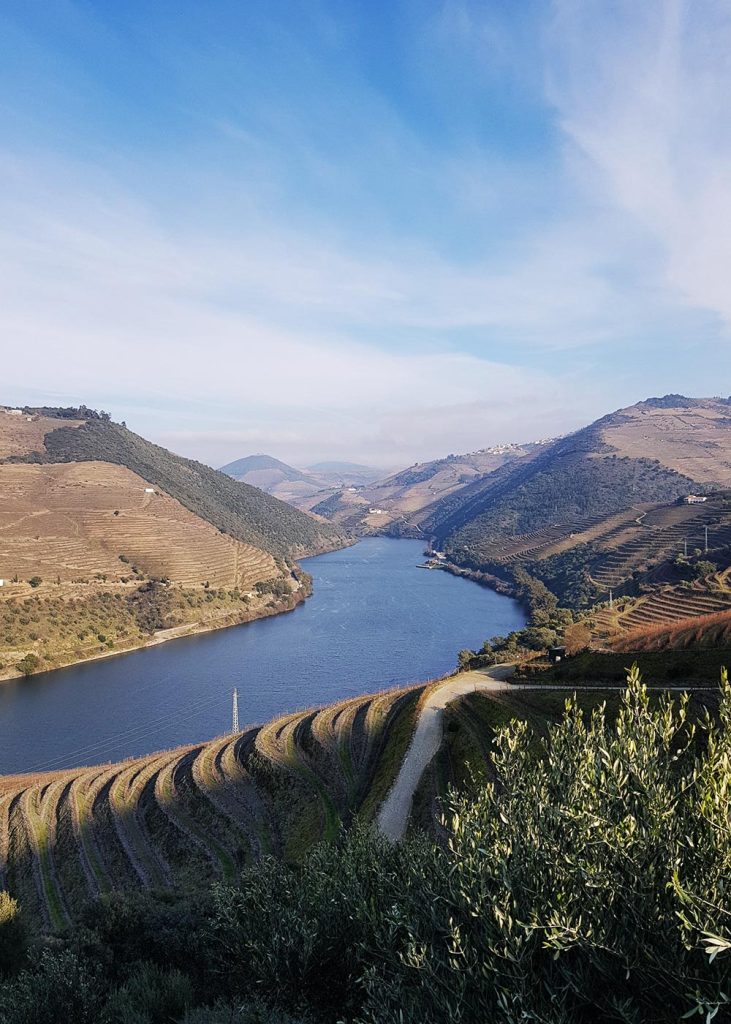
With just one day, go guided. I recently compiled a list of the Best Winery Tours & Douro Valley Day Trips, and from that list, my pick is one of the two small-group tours with Cooltour Oporto:
- Classic Douro Valley tour – includes tastings at two wineries, a three-course lunch with wine, and a 1-hour private river cruise
- Three-Winery Douro Valley experience – skip the boat tour and visit three wineries, plus enjoy a three-course lunch with wine
If you’re on a budget, you can explore the Douro Valley solo by train (follow this Lonely Planet article for tips). The tricky part is that a lot of the wineries are far from the train station, and if you’re going self-guided, most wineries expect you to book tastings ahead of time. If you do take the train, two wineries that are easy to reach are Quinta do Bonfim and Quinta das Carvalhas. I believe both have tasting rooms that don’t require pre-booking.
Visiting in September? It’s harvest season, so you can roll up your sleeves, crush some grapes, and earn your lunch in the process.
Day 10: Porto to Lisbon, via Aveiro & Óbidos
It’s the final morning of your 10-day journey across Portugal, and it’s time to return to the capital. You can, of course, depart Portugal from Porto’s airport, but if you rent a car, it’s always good to drop off at the same location to avoid one-way fees.
The direct drive from Porto to Lisbon takes about three hours, so you could spend the morning in Porto souvenir shopping before driving south, but I’ll offer some suggestions for a couple of incredible spots to see on the way.
Read more… Where to stop between Lisbon and Porto
Aveiro – canals, art nouveau, and striped houses
Drive: 50 minutes south of Porto
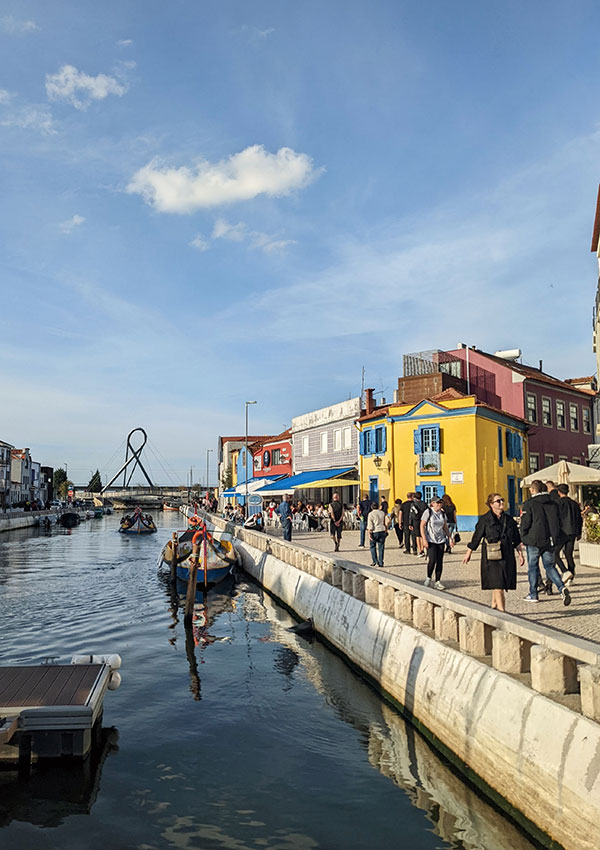
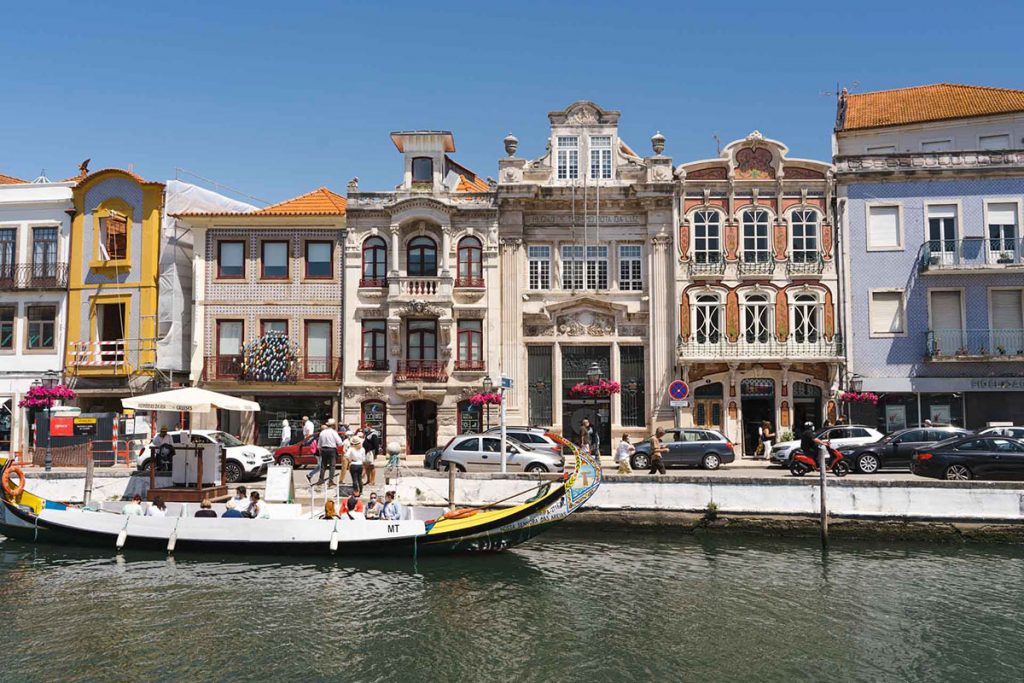
Aveiro is a beautiful, small city, just south of Porto. The historic centre is filled with Art Nouveau architecture and a handful of canals. Traditional, colourful moliceiro boats, once used to collect seaweed in the Ria Aveiro lagoon, now ferry visitors around the old town. Aveiro has a double-edged nickname – “Venice of Portugal”. Don’t come expecting Venice, but do arrive to discover a charming university city with a gorgeous historic centre, beautiful beaches, and plenty to do.
While in Aveiro:
- Ride in a moliceiro boat around the 3-4 canals. Book ahead here or in town
- Follow an Art Nouveau architecture trail, or visit the small museum
- Try ovos moles, a sweet egg custard enclosed in a thin wafer-like shell. My favourite spot for them is Peixinho
- Drive out to Costa Nova, the beach area where historic striped fishermen’s shacks have become a landmark
Read more…. 11 Best Things To Do in Aveiro
Lunch: Have lunch in Aveiro before heading south, or make a detour to Nazaré.
Óbidos – medieval walled village
Drive: 90-minute drive from Aveiro to Óbidos


Portugal’s King Dinis gave Queen Isabel this little village to mark their wedding back in 1282. Why go? It’s a gorgeous destination that you can see in under an hour – satisfying and rich in history! It’s the ideal spot for an afternoon tea break.
While in Óbidos:
- Wander inside the fortified walls to find a village of typical white-washed buildings with yellow or blue trims
- Climb the stone walls (there is a staircase to the left when you step inside the walls) and wander around above the town
- Pick up a sweet treat from Capinha d’Óbidos
- Try a shot of ginjinha liqueur in a chocolate cup
- Cut a lap of the handful of streets
From there, continue to Lisbon – a one-hour drive.
Those are my suggestions for a fast-paced 10-day Portugal itinerary. If you’d like personalised advice for your trip to Portugal, book a call in my calendar and we can talk about what to do and what to skip.
Read next…


